A Quilty Adventure Part VI: How to Sew with Linen
Before jumping in, I first want to point out that my Sew Mojo mini quilt patterns are an excellent way to try out some new fabrics and textures without the scary commitment of making an entire quilt.
Get the patterns here! The pattern below is Sew Mojo #4 which is now available in the shop!
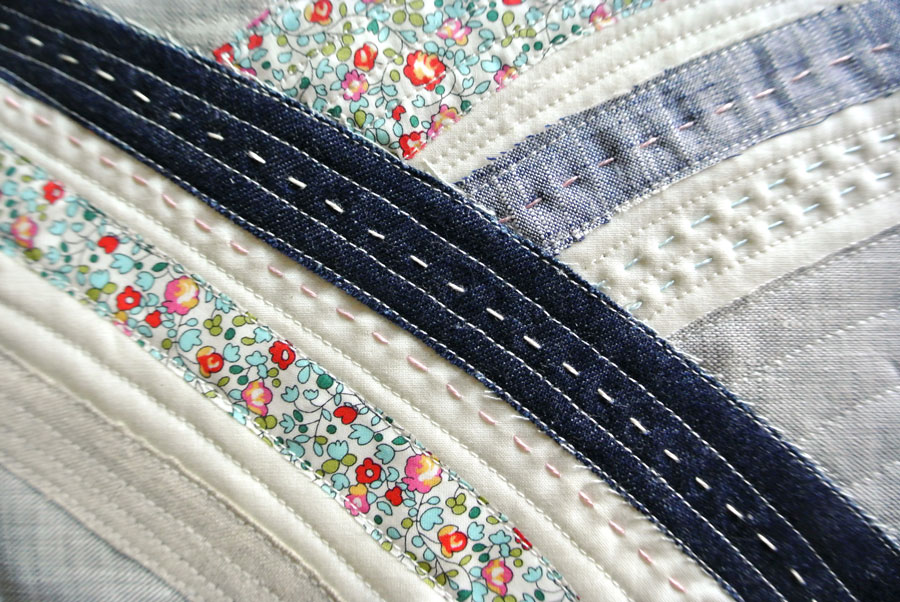
We’ve been on this adventure for a while now, people. We’ve stuck together through the twists and turns of many fabrics. But now, we’re going to take a walk on the wild side. We’re going to dive into the dark jungle of risky quilting. That’s right. It’s time to take on Linen.
Did you just give me a funny look? Oh, I see. You don’t think linen is risky or adventurous at all. Well, that’s where you’re wrong. By the end of this post, you’re going to be really glad you had me as your adventure guide, because you would have been lost in linen’s wiley web of one-way-streets.
Now, now, don’t be too intimidated. With the right gear and a good guide (heeyyy) you’ll be fine.
Trending patterns!
Read More From Our Quilty Adventures!
WELCOME TO LINEN
Warning: Watch for Unraveling
How to Sew with Linen: The History
Before we get into linen’s dark side, let’s talk about how incredibly cool it is. I mean that literally. Linen is a great fabric to keep you feeling fresh and cool in hot weather. Now here’s something you might not have known: linen is actually made from fibers of the flax plant. Yes! The same flax you eat ground up on your oatmeal.
The name linen comes from the latin name for flax (linum) and the Greek one, too (linon). Sometimes, people think they get to call cotton or hemp fabrics “linens” if they’re woven the same way, but we all know who the real linen is. Way back when, linen was actually used for currency in Northern Africa.
Though we can’t bring strips of linen to the bar to cover our cocktails, we can sew some pretty awesome stuff… that is, if we know what we’re doing.
The quilt below uses a variety of fabrics including (cotton broadcloth, poplin, denim, flannel aaaaaand....) linen as the background fabric.
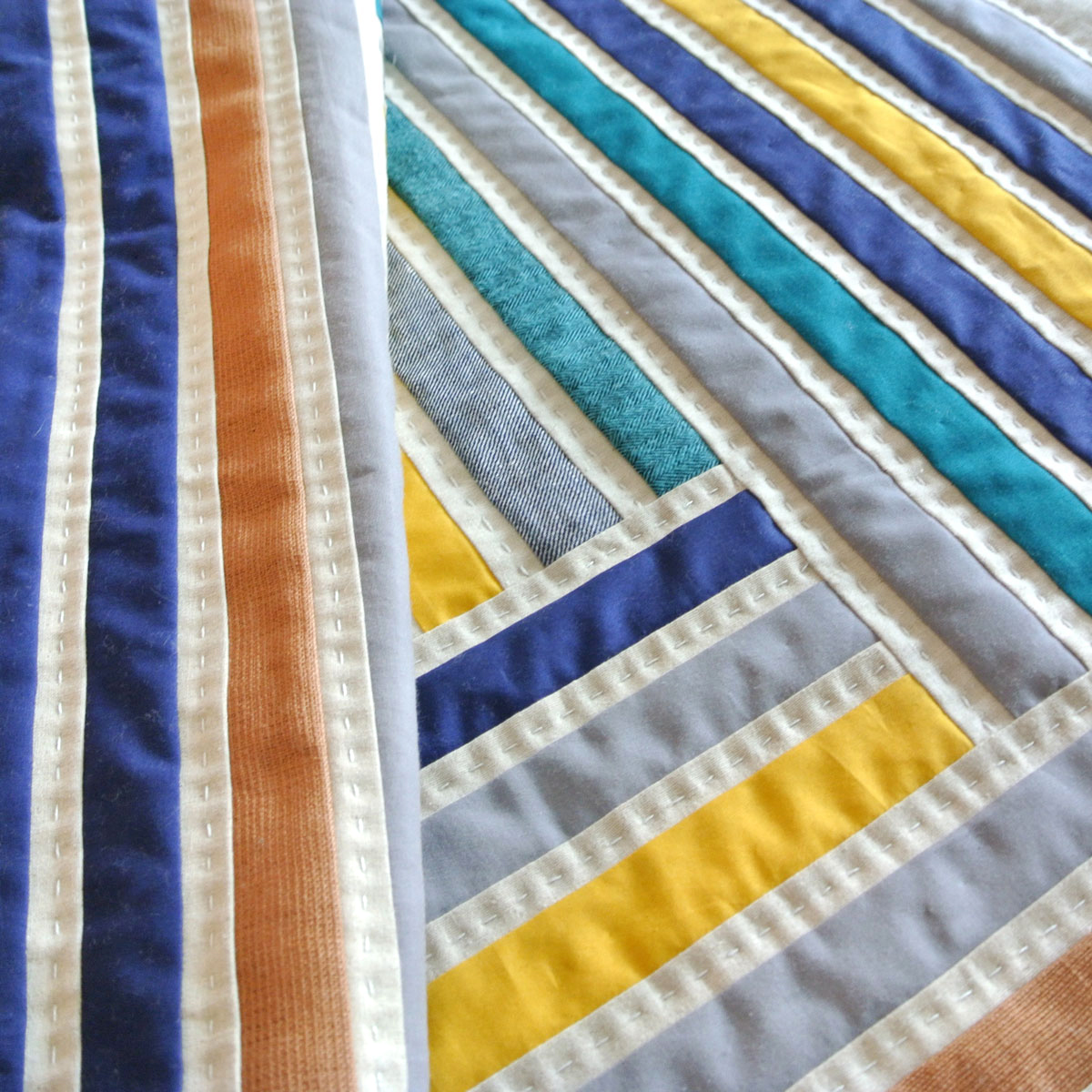
Special Attractions
Remember during our last stop, poplin got dubbed a “forgiving fabric?” Well, linen isn’t as forgiving. It holds a grudge. Don’t get me wrong, linen is lovely and versatile and attractive, just like that boss you had at that company you used to work for. But just like that same boss, linen can be hard to work with, especially when you throw water on her… er… it.
Let’s just get it out there: linen is prone to shrinking, bleeding, and unraveling, so if we want to be satisfied with our finished product, we’re going to want to do this thing right – that means taking care when we’re piecing our quilt, and being super vigilant when finishing our seams. Yes, I said “our.” I love your quilts as if they were my own.
So let’s pack like we’re on a mission… because we are: sew the best damn linen quilt this side of the Mississippi (you know, whatever side you’re on.)
How to Sew with Linen: What to Pack
Let’s start with the good news: thin linens are a breeze to cut. Get out that rotary cutter and your very favorite self-healing mat, and get to work.
Now, if you’re me, you like to do some good, clear marking on your fabric so you can measure twice, and cut once. Here’s our first bit of bad news: marking pencils might not do the trick on linen because of its texture. The marks just aren’t sharp enough, and they can be hard to remove. Test your marking tools on some fabric scraps first, and adjust your methods accordingly.
Okay, back to some good news! Linen actually gets along pretty awesome with sewing machines. It’s not too slippery and doesn’t stretch a ton. You can use your typical quilting thread and a universal needle on your machine.
The best thing to pack when getting ready to have an encounter with linen is a good attitude. Get ready to put in some extra effort, and some extra time, to make sure this project is one that will last (and not fall apart when you wash it.) It’ll be worth it.
The Itinerary
Here we go! I know I made linen sound all dark and scary, but now that we have the right gear and the right attitude, we’re going to be fine. Let’s follow the map:
- Prewash. With regular quilting cotton I can get a little lazy when it comes to prewashing. When I sew with linen, however, I know it’s important. The stuff shrinks. A lot. And that can be disastrous if you wash after instead of before. Just wash before. Stop asking so many questions.
- Don't Iron Too Much. Linen is one of those fabrics that gets shiny when it’s over-ironed. If you like that bright, shiny, happy look, then go for it, but if you’d rather have linen's natural sheen, finger press your seams down, then lightly press each seam with your iron for a few second. If that's not working for you and you really like your seams good and flat, try using a pressing cloth too.
- Shorten Your Stitch Length. To prevent puckering, use a nice and short stitch length when sewing with linen. Go ahead and do a test on scraps first, too. It never hurts (unless, of course, you’re talking about Scraps, my dog. Don’t test anything on her.)
- Be Generous with Your Seam Allowance. Don’t be stingy with your allowance like my mom was with my allowance in the 80’s. Linen unravels guys! Don’t say I didn’t warn you! If you're one of those quilters who religiously uses a scant ¼" seam, linen will be a challenge. You don't have to get crazy, but definitely bump that up to a generous ¼" seam. If it won't throw off your quilt math too much, try bumping it up to a ½" for extra seam strength.
Famous Locals
Bow & Arrows, Me! (Suzy)
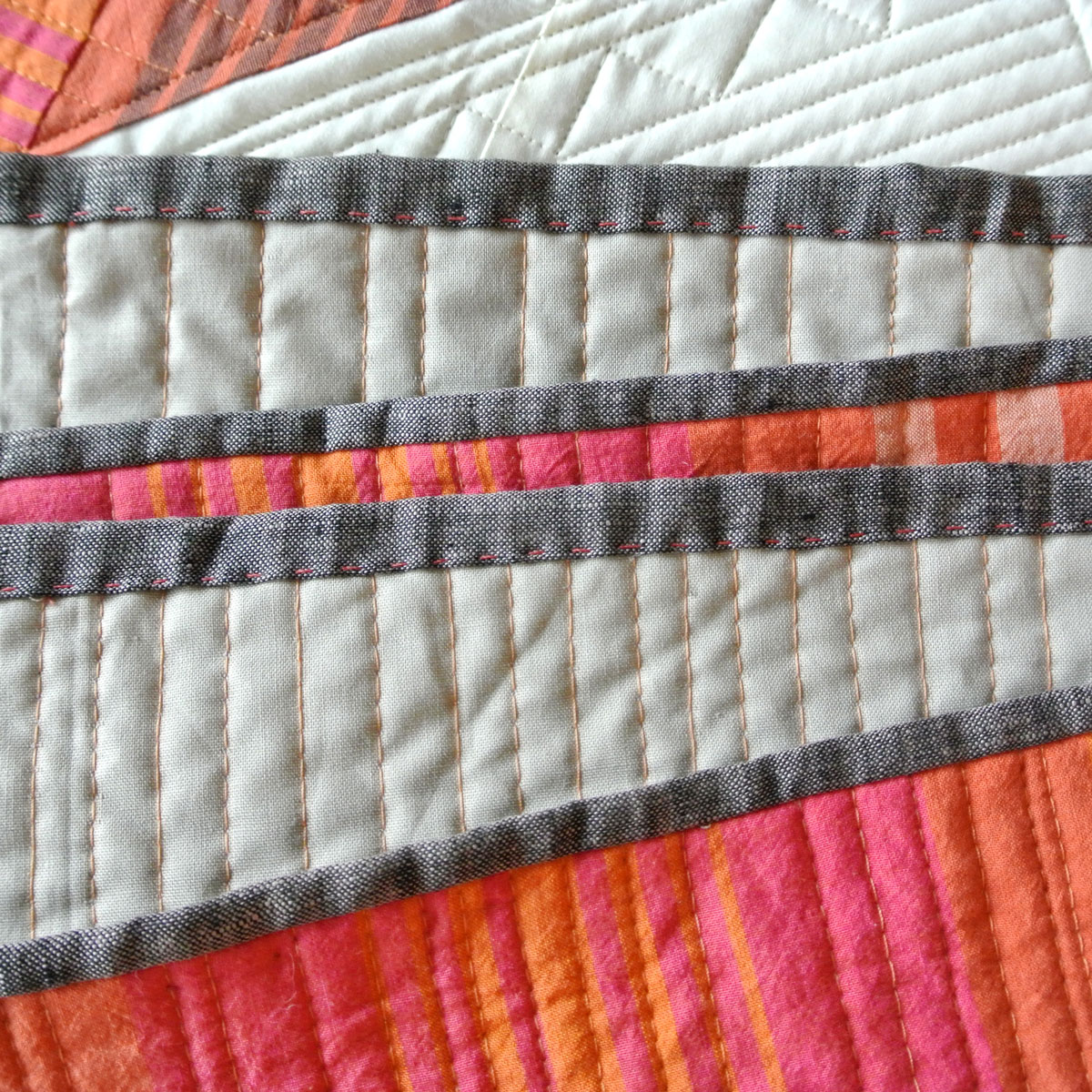
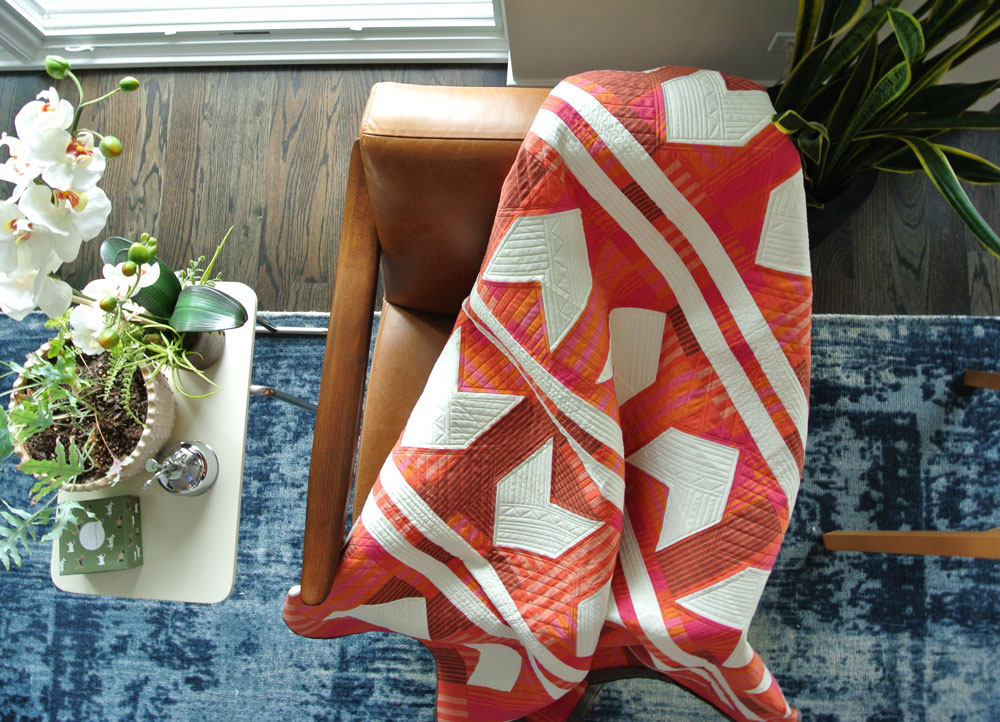
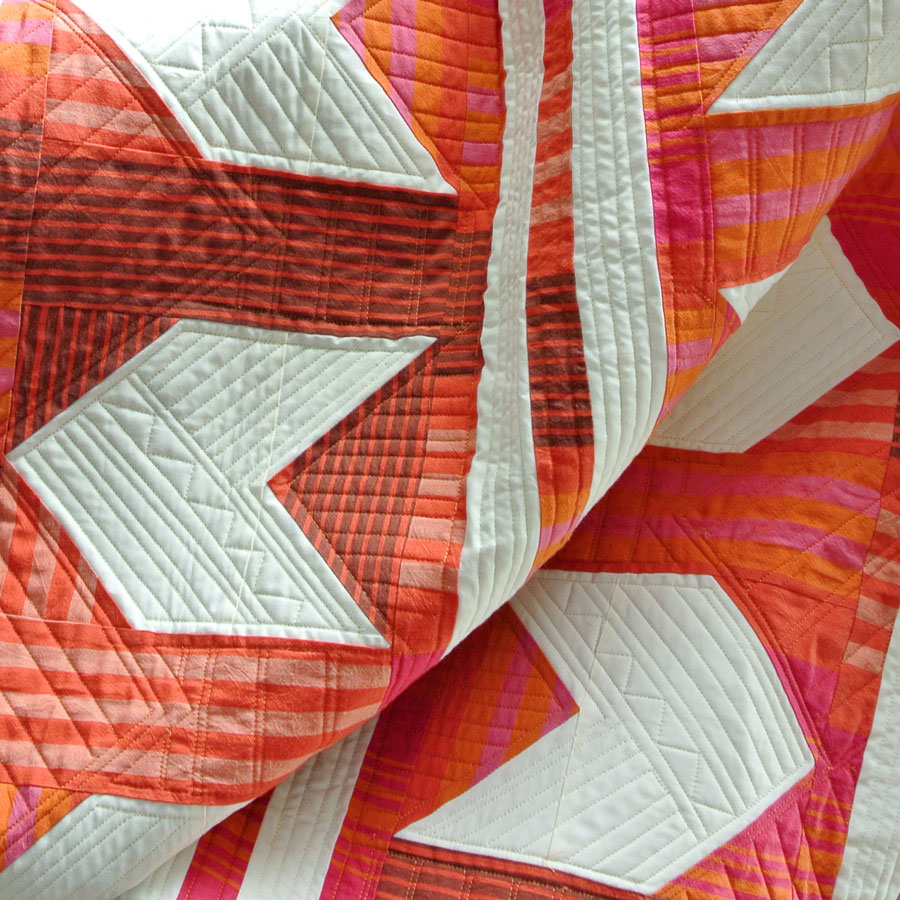
Two words. Linen. Binding. This one may seem a little like cheating, but hear me out. Even though the majority of this quilt uses woven cotton and poplin, the linen binding is what brings the texture of the design together. Since quilts are 3-dimensional and not 2-dimensional, a challenge as a quilter I sometimes forget is to remember that THIRD dimension – the feeeeeel and fold of the quilt.
Late last year (2016) I made a resolution to dive deeper into traditional quilting theology and use fabric outside of the modern quilting canon. In layman's terms, I was going to use fabric that wasn't quilt-weight cotton broadcloth (Hence the whole reason for these quilty adventure blog posts.).
As a modern, minimal quilt designer I am trying more and more to challenge my designs to not just incorporate more texture and dimension but neeeeed more texture and dimension in order to look fully finished and unified.
Guys, I realize I'm starting to ramble here and you may be asking yourself, "where is she going with this...?"
SO, I'll wrap up this TED texture talk by remembering our quilting ancestors. Utilizing texture was second nature to them – cast-off clothing, tablecloths, even old quilts were being cut up and recycled continually. In a modern world of flatscreen TVs, tablets and smooth tech surfaces, shouldn't we textile artists be enhancing our quilts with more texture and dimension than ever?
Just a thought ;)
Indigo Dyed Half Square Triangles, Jen Beeman
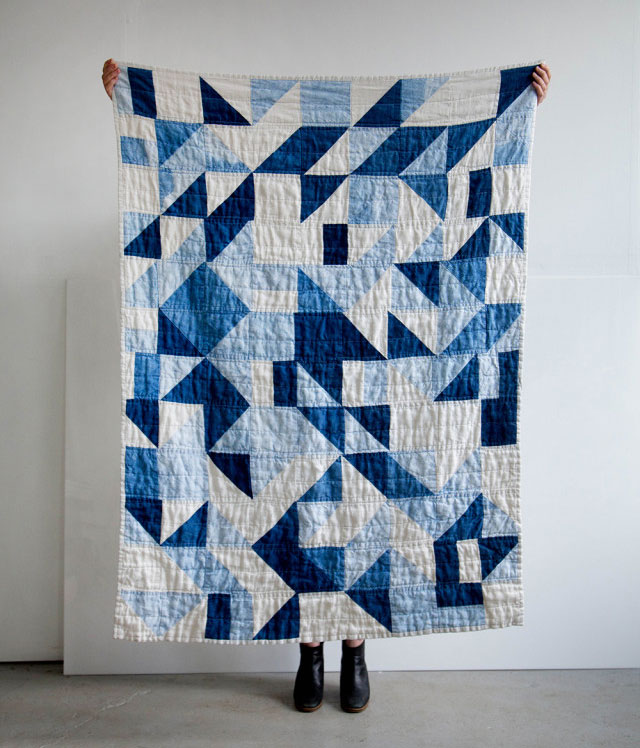
Inspired by indigo floor tiles, Jen and her mother hand-dyed some luscious Belgian linen to make this stunning quilt.
Essex Linen Hourglass, Beech Tree Lane Handmade
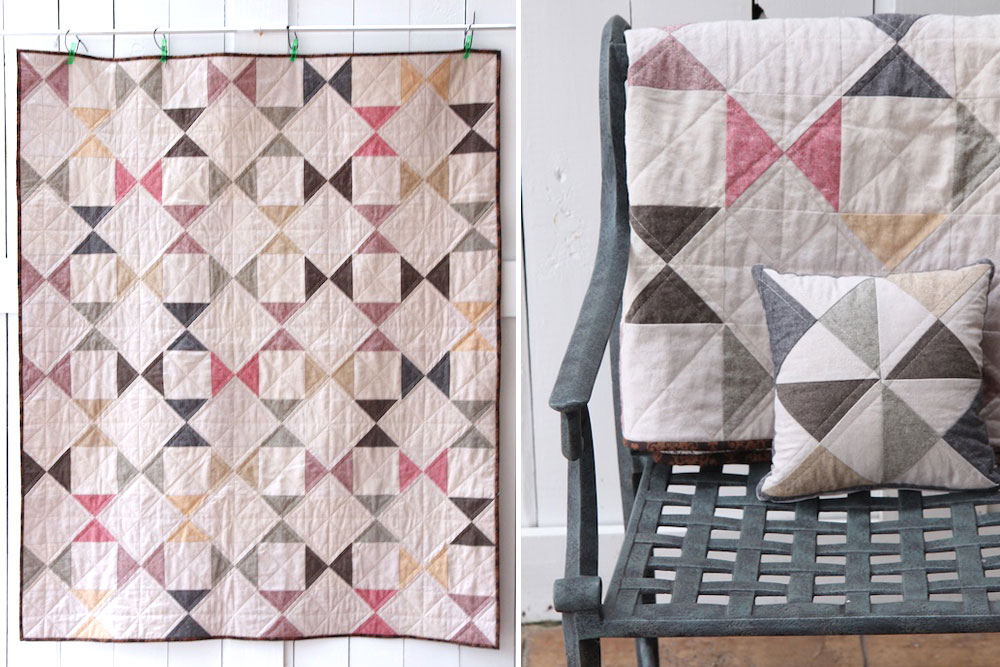
Elaine from Beech Tree Lane Handmade takes the simplicity of the hourglass block and elevates it by adding the subtle texture of linen. In her blog post (link above) she talks more about her process and tips for working specifically with Essex Linen.
Before You Check Out
Now that we’ve been through linen together, I feel like we can do anything. You and I can take on the fabric world! We have one more stop on our quilty adventure, and I can’t wait to finish up this wonderful trip with you. It’s been a blast. You’re the best. That mixtape you made for the ride really pumped me up. Friends forever.
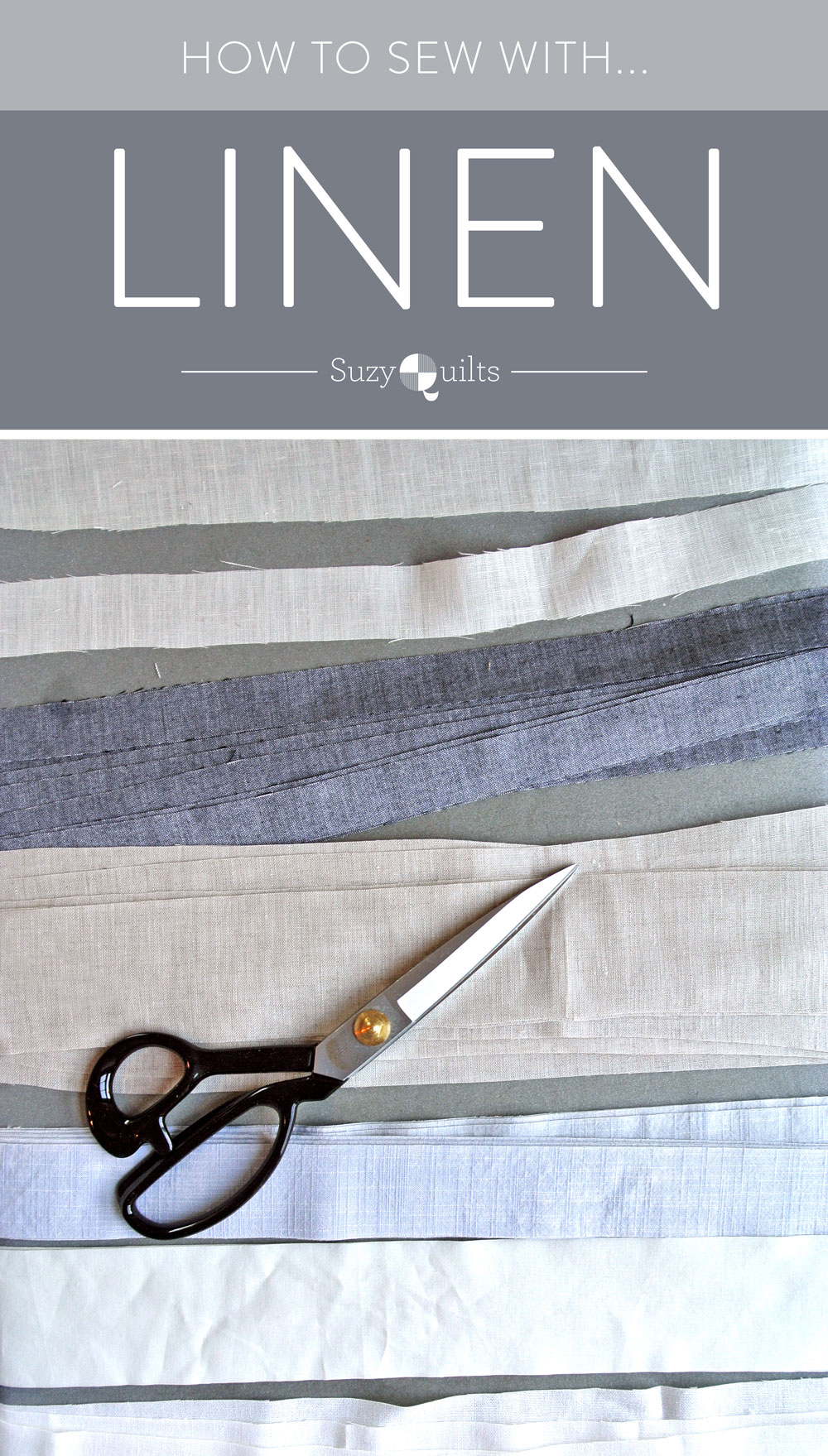
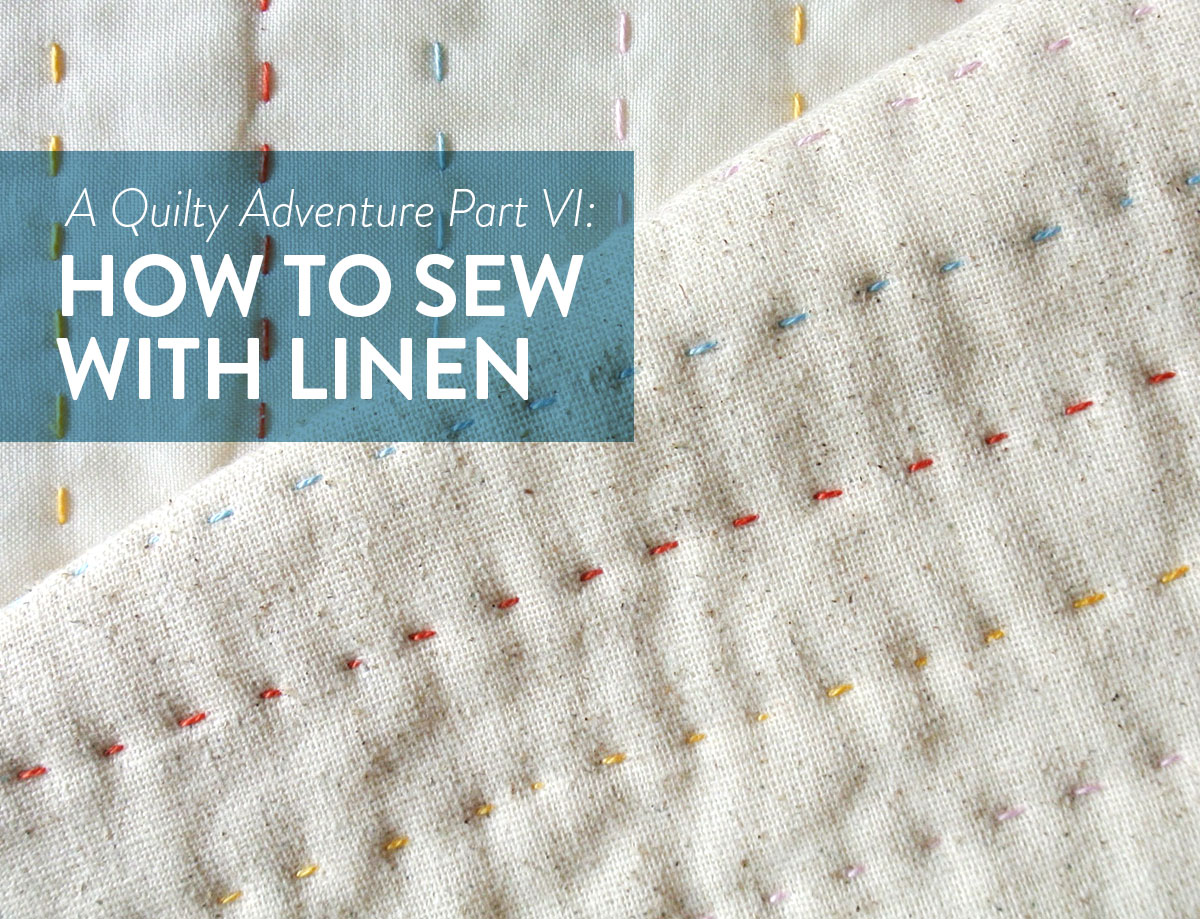
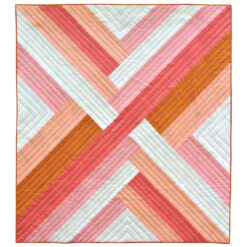
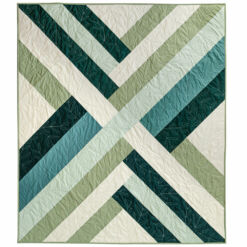
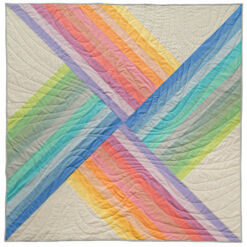
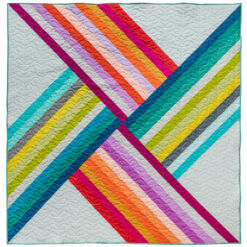
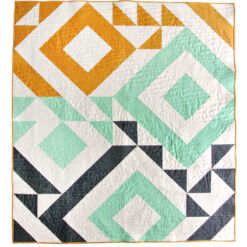
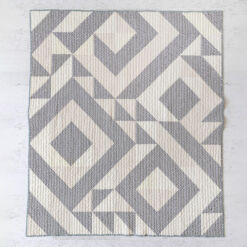
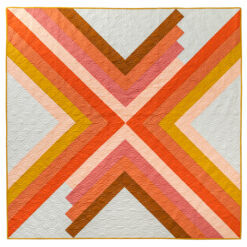
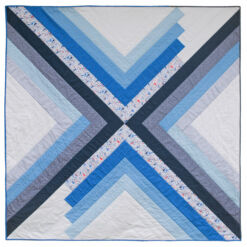
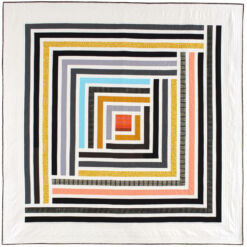
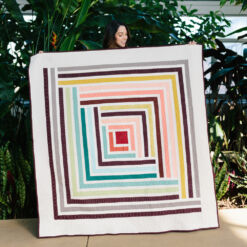
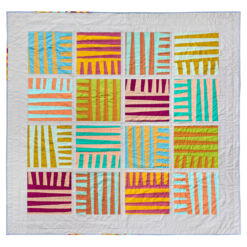
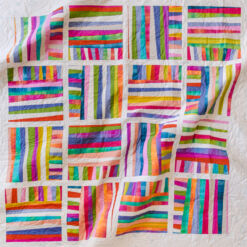
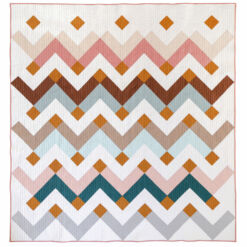
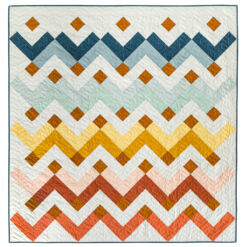
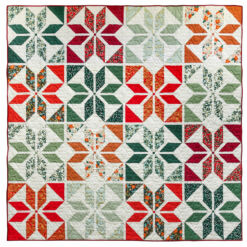
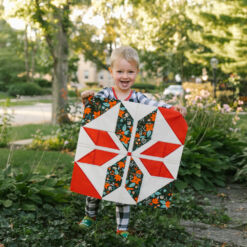
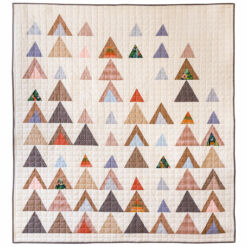
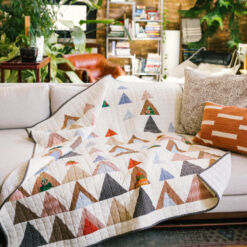
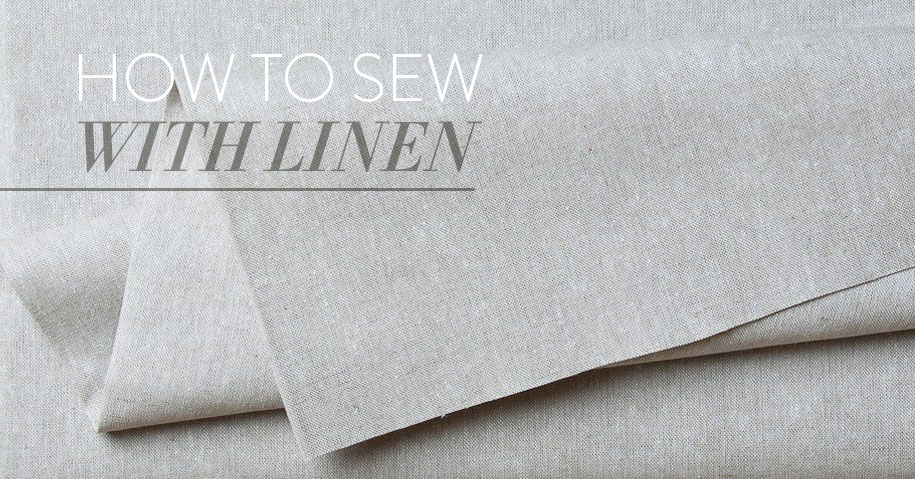
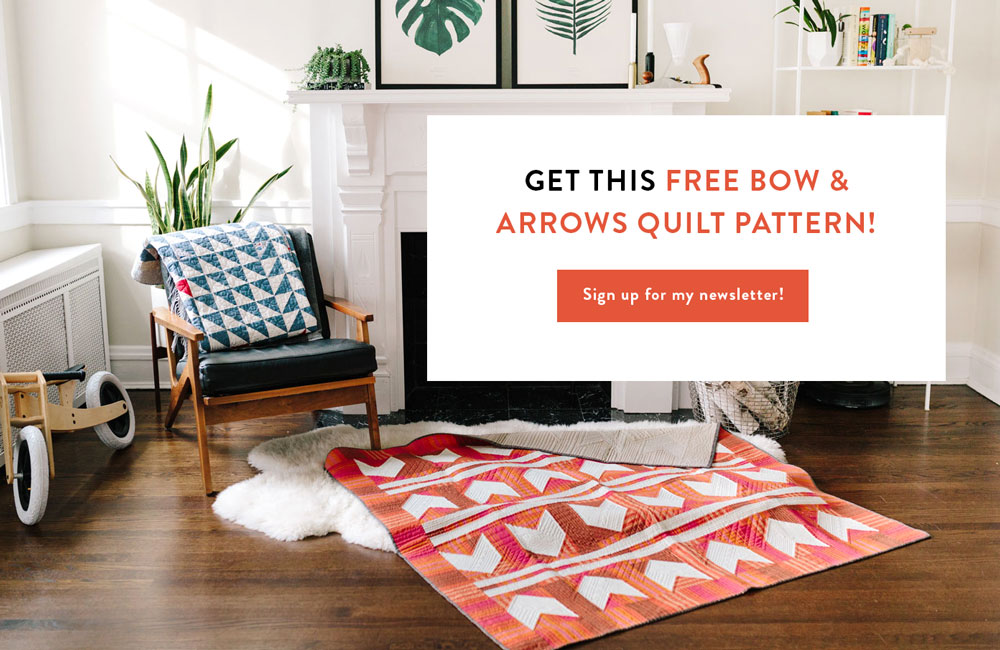
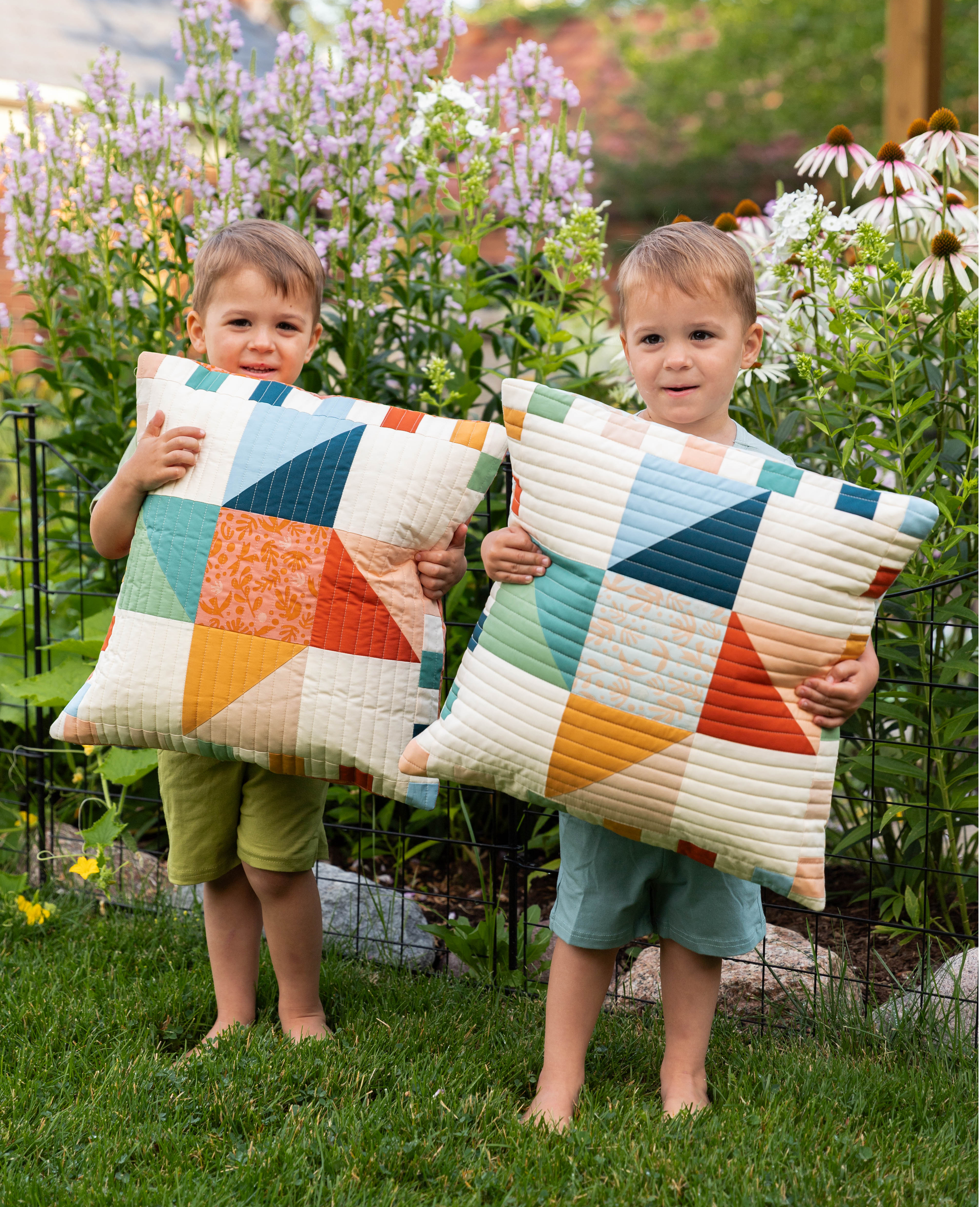

Suzy, this is a terrific series! Bow and Arrows is a gorgeous quilt! I’ve got to try some linen in a quilt, now that I’ve seen how much it adds. I need to make myself some linen pants for my daughter’s wedding 🙂 and the last time I sewed with linen–in the 60’s–I made a lined linen dress and I think it weighed about 15 pounds! So some questions:
1. Cool water wash? With/without detergent?
2. Hang or dryer dry?
3. Do I need to finish the seams? Zigzag, . . .? (Don’t have a serger 🙁
Looking forward to the last in your series. I’ve sewn for over 5 decades, and I’ve learned something new in every one of your posts. Thanks so much!
Hi Karen! I’m so happy to hear that you are enjoying this series. I’ve learned a ton too!
1. Even though linen has a reputation for being heavy and unraveling, it’s pretty tough and can take the heat of your washer and dryer. I would probably prewash with warm water and a little bit of detergent, then throw it in the dryer on a regular setting. If that makes you nervous, hang drying would be fine too.
2. Both would work great.
3. Technically…yes, that’s a really smart idea, especially if you plan on using your linen for garments. I did not include that in my list because 1) it would totally freak out quilters (hahaha) and 2) quilt seams don’t have to be as durable as garment seams, so quilters can get away with a 1/4″ – 1/2″ seam without total disintegration. Most quilters, too, are probably sewing with a linen/cotton blend rather than 100% linen.
Hope that helped! xo
Does it need to be tumble dried as part of prewashing, or will simply washing it in the machine be enough to limit nasty surprises when the quilt it done? I don’t buy huge cuts of fabric, and they already come out of the machine (in those mesh bags, don’t worry) looking pretty frayed and tangly around the edges, so I’ve always assumed I should whisk them off to the clothes horse before that gets any worse. Plus wouldn’t they come out more creased? But since I’m planning to start working with fabrics that shrink more, flannel and linen and such (does corduroy do this? Could you write about corduroy?), I don’t know if I should change my washing routine.
If you’re buying a smaller cut of fabric, and don’t want to lose a lot to fraying, you can even wash it by hand and then hang dry. That’s a great option!
But do I then run the risk of getting nasty shrinkage when I machine wash and tumble dry the finished quilt? I’d rather lose a bit to fraying now than have months of work messed up later.
My collection of linen blends, flannels and needlecords is growing nicely, and I just received a metre of a really beautiful Robert Kaufman herringbone flannel in soft orange, which I’m planning to use for backing a wheelchair quilt. Also I am planning to start a quilt blog, so watch this space!
I’m a big fan of finishing the raw edges of my cuts before throwing them in the machine. I just zigzag with whatever thread is in my machine and thus avoid the crazy tangled mess.
I washed and tumble dried a bunch of cotton/linen blend fabric that I’d bought, and several of them ended up with creases all over them where the colour is faded and appears unfixable. I don’t know if I’ll be able to use it. A friend who knows more about fabrics says it’s a problem with the mordants used, and that I shouldn’t have tumble dried them. I still haven’t contacted the seller, I thought it was perhaps my fault for tumble drying the fabrics. I have no idea whether I should dare use them how. They’re not Robert Kaufman, I don’t know the brand.
When I prewash I tumble dry all of my fabric. If your fabric comes out of the drier with extremely faded colors and weird creases, that’s the manufacturers fault, not yours. As long as you are sure the dyes won’t continue to fade, I’d use those fabrics in patterns that require small cuts so you can fussy cut around the uneven parts. If you’d rather not do that, maybe donate the fabrics to a fiber artist or fiber arts group that dyes their own fabric. I’m sure they would know how to re-dye the fabrics and turn them into something usable.
Ahhh I was hoping that you would have a linen series. Did a quick google search and you where right there first in line.
Question. I got a whole bunch of beautiful linen fabric samples. I am dying to attempt a quilt or something with them. Would you stick with bigger pieces or would they work ok with blocks with more smaller pieces sewed together??
Let me respond to your question with a question, is it a linen blend, lightweight or heavy? A lot of fabric manufacturers have started producing “linen for quilters” and it’s a light-weight linen blend. That stuff you can treat very similarly to quilt-weight broadcloth. The thicker stuff is a bit more complicated. The smallest I have cut heavy linen for piecing is 1″ wide strips (which is still pretty small). I finger press the seam down and then place a pressing cloth or piece of cotton on top – then hit it fast and hot with the iron. That works well to keep seams flat and in place.
Some of it is 100% linen, some are a jute and cotton blend. Or just a linen and cotton blend. Most are light weight to medium weight.
I’ve just been given an Irish Linen bedsheet and would like to incorporate it into a quilt to give back to the donor! Would I be better to applique cotton “patches” onto it or use the linen sheet as the backing fabric? I’ve only handsewn a Hexi quilt top til now!
Depending on the pattern of the linen and the look you are going for, you really could do anything. Linen is pretty versatile, so most things you can do with quilting cotton you can also do with linen.
Fantastic! I’m glad to have stumbled across this post on quilting with linen. I think I want to make a super simple piece from 6″ squares for my master bed. Thanks for the detailed challenges to watch out for!
Love your writing! So, I sewed some patchwork cushions a while back using vintage linen. As it was vintage I didn’t know what type of linen it actually was, but boy was it a slippery little sucker! I have a feeling it might have been a silk linen (is there even such a thing!?!?!). I had to starch the heck out of it to get it to behave better and even then I was just about tearing my hair out. Slippery and very fray-ee (that is most definitely a thing 😂). But the finished product was well worth every ounce of pain and anguish during the sewing process!
Hi There,
I’ve been saving up linen for about a year now for a “down the road”, quilt I want to make. I am even more excited now that I’ve read your short article. I’ve gathered most of it via clothing that I’ve picked up from yard sales, thrift stores, estate sales, etc. Finding a linen skirt is golden as there is a lot of fabric in a skirt. I’ve found some beautiful colors too. I just wanted to pass along this very cheap way to gather some linen pieces to sew. I know your readers can turn it into a quilted masterpiece!
Do you cut your binding on the bias or straight edge when using linen?
I don’t. I cut on grain like I typically would do, however I add at least a 1/4″ – so instead of my typical binding strips cut at 2 1/4″, I cut linen binding at 2 1/2″ or 2 3/4″ depending on the weave of the linen. I have a video on this is you’d like to check it out – https://suzyquilts.com/how-to-sew-binding-on-a-quilt/
Hey thanks a lot for this, Suzy! I recently acquired 2 Alfred Shaheen hand printed Hawaiian linen panels and as a quilter, i naturally thought “how can i quilt with these?” so i searched and here you are.
Any recommendations for working with a large swath of it? the panels are very large (and lovely).
I would stick with the tips listed here. Prewash and up your seam allowance so you don’t have to worry about fraying edges. Good luck!
Oh no…I am an inexperienced quilter, but have been sewing for years. I have your glitter glow quilt pattern and I’m making the king size!! AND… some of my fabric is linen (fabric number 1). I have started cutting and only now read your post about pre-washing. I’m about half way through my cutting. Should I just stick with the non-washed linen now? Oh Dear Ö
First off, a linen king sized quilt sounds beautiful! And don’t fret, all is not lost. Do you know if your fabric is 100% linen or is it a linen blend? If it’s a blend, it won’t fray much more than your normal quilting fabric. If it’s 100% linen, just handle it with lots of care and I suggest using a Tailor’s Clapper to get the seams really flat so they don’t get over handled.
Once the quilt top is finished, quilt it relatively densely. The denser the quilting the more stable all of your piecing will be (= less likely to split any seams.) After the quilt is finished, I then suggest washing it by hand, just to be extra safe. Since it’s a king you won’t need to wash it very often. Here’s a post that should hep – https://suzyquilts.com/wash-and-care-for-a-quilt/
I’m planning to try different fabrics, including linen blend, and also a tailor’s clapper on your recommendation. Your article series is being immensely helpful. I know that flannels can end up pilling, which I’m anxious to avoid. I spotted one of the Robert Kaufman Shetland flannels in a picture on this post, the herringbone one in teal. How have you found it? I’ll be prewashing and using 1/2″ seams, and I also sew everything by hand. I’m planning to try improv quilting, too.
It’s a beautiful fabric that’s wonderfully soft. Highly recommend!
Excellent! Which other heavy fabrics could you recommend, for sewing by hand? I’ve found a place selling lovely needlecord in lots of colours, that’s the first thing I’m going for. Cautiously looking at the linen/cotton blends as well, though how soft do they end up? The only linen blend I’m familiar with is the linen/viscose mix summer trousers I always buy. The plan is to combine these fabrics with cotton batting to make a heavier quilt, without going full-on weighted blanket.
For quilting, I’m getting very fond of crow’s feet stitching, which is a hybrid between quilting and tying. You do little fly stitches, say at 2″ intervals, and use a long needle to travel the thread between the layers in between. So much quicker and easier, works well with perle 8, and I’m having fun working out the design possibilities.
That sounds beautiful! Linen blends and quilt-weight 100% cotton fabrics are also great for hand sewing. I have a hand quilting tutorial if you’re interested – https://suzyquilts.com/how-to-hand-quilt/
Goodness, I wonder why people keep thinking I don’t know how to quilt when I say I’m trying crow’s feet stitching. I’ve joked that I now have enough quilting rosettes to make a very small costume! But my disabilities are worse, and my hands aren’t coping well with traditional quilting. I’ve nearly finished requilting a bedspread with crow’s feet quilting, however, and it’s going very well. I’ve found one quilter online, Sarah Kaufman, who’s had to modify her techniques due to arthritis, and she’s doing crow’s feet stitching as well. I’m currently planning big spirals with it, with colours shading within the spirals.
I’m planning to make a heavy quilt because I think my partner and I would, both find the weight soothing, plus I’m in lvor with all these textured fabrics. I’m just trying to work out where my limits lie with quilting them.
Lovely tutorial and quilts, I’ll use some of those patterns for design ideas, and I adore the small dog photobombing the pictures.
It’s not that I don’t know how to quilt, I’ve won rosettes for my quilting. My disabilities are getting worse, and right now quilting is too hard on my hands. Crow’s feet stitching turns out to be far more manageable, so I am exploring the design possibilities. So far I’ve found people talking about it a bit as a tradition, a few photos of people using it as an alternative to tying in a very basic way, and only one quilter using it in a slightly artier way. Sarah Kaufman, she adapted her techniques due to arthritis. Still not as fancy as I’m planning to get, though!
I’ve been requilting one bedspread so far, which I made as a newbie years ago and didn’t quilt densely enough, leading to lots of repairs. Nothing exciting, it’s just strips of diamonds and I’m doing eight stitches inside each, matching the fabrics, but it’s allowed me to sort out my technique. For the next quilt, which is more strongly and variably patterned for the piecing, I’m planning to stitch in spirals and shade thr thread colours.
Update from three years later: I’m now skilled with a variety of heavier fabrics, including corduroy and even cotton velvet (match the pile direction like your life depends on it, and if you can’t, use diagonal pinning). I’m going through a bit of a linen phase right now, pure linen this time, as there was a “scrap bag” on sale that appealed to me, and I’ve also backed a couple of quilts with linen or linen blends. The weight of the linen I’m using at the moment (230gsm) is making it a little harder to keep straight on the design wall, as I’m doing an improv giant quarter log cabin, so I’m having to be careful with that, and reinforce some ends of seams.
I’ve stopped buying flannel, it pills too much. 21w corduroy (needlecord/babycord/pincord) is one of my favourite fabrics to work with, and I rather like the little ritual of stroking it to check the pile direction before adding a piece.
I still can’t sew a 1/2″ seam by eye, like I can with a 1/4″ seam, but we have rulers for that, and it works fine with freehand rotary cutting as well. I never did learn to use a sewing machine, so this is all hand sewing.
Suzy what size needle do you use for Linen?
On my machine, a Bernina 770, I can use either an 80/12 or 90/14 – both work really well.
Hooray! Thank you for this post! I’ve just finished piecing a quilt top using some vintage cotton 9-patch blocks and linen sashing (I prewashed and dried.). I’m about to cut the backing out of linen and am wondering if it matters which direction I orient the fabric. Since it’s a wide piece and the quilt is crib size, I could easily just use the width, but I wasn’t sure if it mattered. Does that make sense?
That does make sense and the only thing I’d worry about is trying to keep the grain in line with the edges of the fabric.
Do you have a store (online or in person) you love to buy linens from?
I have a list of great shops here – https://suzyquilts.com/the-ultimate-guide-to-best-fabric-online/
I have never sewn with linen before but I just got a bunch of Robert Kaufman Essex Linen. I want to use for a quilt top and backing. I know they are a linen cotton blend but I am unsure if I should prewash. I have never prewashed quilt fabric before and my fear is I will ruin my fabric. I have a top load washer, does that make a difference? I also don’t want too much shrinking especially because I am unsure how dense the quilting will be. I’m feeling intimidated by linen haha.
Hi Suzy, you’re the best! When using linen in a quilt – would you recommend only using linen in the quilt or can I mix using just normal cotton fabric as well?? I’m a newbie and scared to mess anything up!
Thank you. Love your blog, patterns, and insta stories! 🙂
Mix and match, baby! Just prewash first 😉
What about using linen for a backing? I found a really pretty piece in the print I want. But it’s linen! I don’t know if that’s a good idea??
It’s not a good idea. It’s a GREAT idea! Linen will keep getting softer the more you wash it and makes for a FABULOUS quilt backing.
What are your thoughts on ‘vintage’ 100% linen napkins (or table cloth)? The Irish type. Tightly woven damask. I have used them in the past as everyday napkins..3kids…washed, dried,..no special care..and they proved to be quite durable. Planned on simple (haha) no triangle pattern…
Thanks for any insight!
Go for it! Even though these napkins are tightly woven, I would still suggest a wider than normal seam — at least 3/5″ and maybe up to 1/2″
Hey Suzy!
I just finished an impromptu baby quilt top – it’s a combo of quilting cottons and Essex linen. I live in Bulgaria and am relying on my stash to finish it up because there aren’t any fabric store with quilting fabric here 😩 I have some plain white flannel and kona snow in my stash that I could potentially use for a backing – would it be funky to add flannel as backing to a quilt that already has linen and cotton? I preshrunk my linen but I don’t want to cause any wonky stretching after the fact, especially because I’m planning on hand quilting it. Advice appreciated 🙃
Flannel will be a wonderful addition! I use a combination of fabrics all the time – makes for a beautifully textured finished quilt. It’s good that you prewashed, since those fabrics shrink in different ways; however, even if you don’t prewash, the integrity of your quilt will still be fine, it will just look very crinkled once washed.
Hello, Thank you for the tips. I have a few vintage Irish linen tablecloths, clean and very soft from washings. My plan is to use them for quilt backing. Just wanted to say that estate sales are great places to find these gorgeous Irish linen tablecloths for very little money. Many were purchased as souvenir items then put into a drawer or closet. Some may have been used and soft from washings while others may be still in package and never used. Got one for $3 that is rectangular type seating 6-8. I may use two tablecloths for a white on white kind of quilt…then applique pieces of vintage crochet.
Does it ever beard, considering the more open weave? I’ve been chatting to an Instagram friend who is gutted to find her new quilt backed with Kona cotton has bearded horribly, and that has me wondering about linen.
If your friend has a bearding problem, chances are it’s the batting and not the fabric that is the culprit. Some low quality cottons and wool batting can beard. The bearding can be extra obvious is your backing is a solid contrasting color (like a dark Kona cotton).
Replying three years later, I’ve had bearding with Quilters Dream cotton batting, which has an excellent reputation. But the backing was black batik, and the quilt sat on top of a heated blanket, so there were static and friction issues. I now know to avoid those factors, and it stopped bearding once I put a thin cotton bedspread in between the quilt and the heated blanket.
I backed a quilt in linen last year, after finding a big piece of gorgeous burnt orange linen I’d bought years ago at the start of the pandemic. It seemed to go well, though it wanted close basting for the hand quilting, it kept trying to shift. The quilt came out lovely and my friend was delighted.
I’m now eyeing up a linen/cotton blend in the perfect red to back a flannel and corduroy quilt I’m making for another friend. Does linen binding feel reasonably soft after a while, or is it a different textural experience? I bound a wall hanging with this stuff once, and I think I remember it feeling more crisp, before I sent it off.
Hi Suzy! I’ve done some quilting and have been sewing for years. My daughter tie-dyed 100% cotton napkins for her wedding. With so many extra, I decided to make a quilt for her and her new husband. I’ve made t-shirt quilts before and have lined each piece so the wouldn’t have as much ‘give’ with the jersey fabric. The napkins are a bit heavier in body. Do you think I would have to line each of the napkin pieces before stitching them together?
No, you don’t need to add stabilizer to the napkins, assuming they are a woven fabric. Stabilizer is nice for something like jersey because that type of fabric can stretch really easily.
Wonderful post! Just wondering if you can still strip piece with linen, or should each piece be handled individually to avoid the threads pulling out at the edges?
You can still strip piece, just don’t rip the fabric and definitely handle with care.
Hi! I’m totally new to quilting, like I haven’t made one yet. Thanks for the bounty of info here. A question…if using cotton/linen blend and cotton, do you prewash everything or just the cotton/linen?
Unless you are using precuts (fat quarters, a jelly roll, etc…) I suggest prewashing all of your fabric.
I know this is an older post, but do you have any thoughts on whether it would help to sew a zig-zag stitch around the edges of the fabric before washing to prevent fraying? (And then just cutting it off after?
I think that would help. You could also use a straight basting stitch around the edges.
I am using hand dyed linen to make a wholecloth quilt and trying to decide if adding a lightweight fusible interfacing would be helpful. This is the first quilt I’ve made since I was a kid and also my first wholecloth. Do you have any thoughts?
I don’t think you need any interfacing. Is there a reason why you want to use it? As long as you baste your quilt sandwich well, quilting it shouldn’t be an issue.
Thank you so much for this posting. I have not been quilting for long…but that’s not going to stop me from trying something for which I cannot find any guidance, whatsoever: a silk (from ties) and linen quilt. I plan on interfacing everything and I already have several yards of very lovely 100% linen repurposed from some drapes. However, I was wondering if I should just invest in a lightweight linen-cotton blend. I am thinking that, after laundering, it might be better for keeping the blocks and the entire quilt in square. Thoughts? Tips? Thanks!
Hi Suzy,
I am starting a large quilt using Essex linen and the Essex metallic linen. I noticed quite a bit of fraying after pre-washing and am wondering should I increase my seam allowance to 3/8 or 1/2? I anticipate this quilt will be laundered regularly when gifted. I just don’t want seams popping open on a gift. Thanks!
If you are able to figure out the math to make the quilt pattern work, increasing your seam allowance to 3/8″ is a really good idea. If you do keep you seam at 1/4″, make sure your stitch length is no larger than 2.5.
Suzy do wovens work the same?
Thanks for the post! I’m currently obsessed with linen (well, it’s been going on for quite some time- I just can’t get enough of the texture). I have an HST quilt top that has taken me years (I also had a couple of babies, etc…) and am finally at the quilting stage. I am trying to decide if I should use wool batting or bamboo batting. Any thoughts on which would play better? I love the lightweight quality and drape of wool batting but have yet to try bamboo. It’s an extra large throw that will be going on my bed so it will probably need washed periodically. I love an earthy, crinkled look. Thoughts? Thanks!
Both are great options and have very different perks and looks. If you want that extra crinkle, maybe wool is the better option? Check out – https://suzyquilts.com/why-wool-batting-makes-the-warmest-quilts/ and https://suzyquilts.com/why-bamboo-batting-makes-the-perfect-summer-quilt/
Thanks so much! I have read both posts and found them very helpful. Love your work!
Thanks so much for your tutorial and for answering these interesting questions! A terrific job!!!!
Hey there! What type of batting do you use for linen quilts? Would it be crazy to use none?!
Do you think it’s safe to use both pure linen and cotton/linen blend fabrics in the same quilt?
Definitely! I recommend prewashing them both.
I plan on making your Adventureland quilt pattern using a kit that I bought from a shop. It has a jelly roll of Camont Fabric by Rifle Paper and the background is a linen/cotton blend by Robert Kaufman. Would you explain if you would wash the linen blend, but not the jelly roll? I know it’s not normal to wash a jelly roll. I’m a little anxious about using the linen.
Hi Barbara! No need to be anxious about using linen—it’s one of our favorite materials here at Suzy Quilts! We definitely do not recommend washing any pre-cuts because there will most likely be too much loss due to shrinkage and fraying since they are small. So don’t wash that jelly roll. But we love pre-washing linen yardage to get the shrinkage out of the way before piecing! You can read more this link: https://suzyquilts.com/quilty-adventure-part-vi-sew-linen/
This was worth a read! I have pretty much zero experience in sewing, but I am an avid crocheter and I would like to make baby/girls dresses combining a crocheted top with a fabric/linen lower half. I have some left over linen from ikea DYTÄG “crushed linen” curtains. I know that I washed and ironed the fabric before cutting and hemming the curtains. I noticed though that the extra fabric sorta rubs off like tufts of fur. Would you recommend this for my sewing project? Thanks in advance!
Is it the raw, unsewn edge that is fraying? If yes, that’s totally normal for linen. However, if the actual woven fabric itself seems to be shedding, that’s weird and I wouldn’t use it.
Your article popped up when I did a search for sewing linen quilt with wool batting. I’ve collected vintage Irish damask tablecloths over the years, many never used, from estate sales. Time to up-cycle them to useful items. The tablecloths are quite large, white on white, with the traditional floral patterns. I’ve pre-washed, tumble dried, and lightly ironed. They will be whole cloth quilts and I’ll have it quilted by my local quilt shop. Any advice for the long-arm operator?
I would just say that if you want the fabric to shine, opt for a quilting design that isn’t very dense.